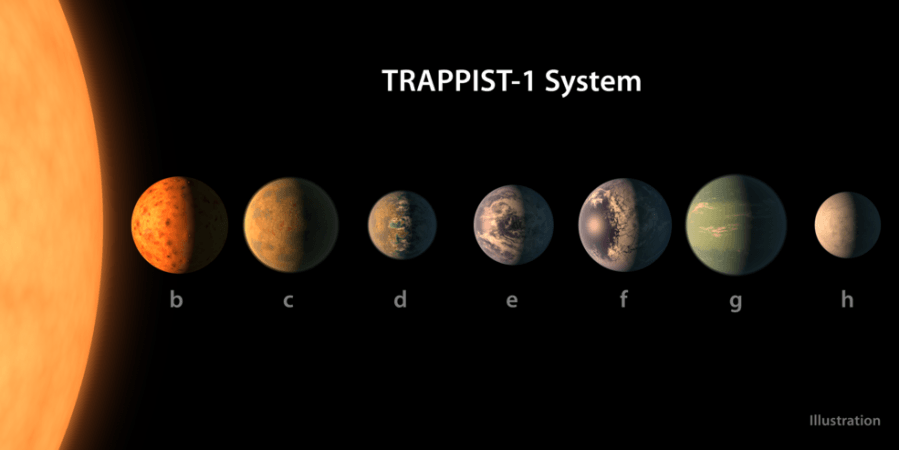
NASA has revealed that the seven planets discovered last year in TRAPPIST-1 exoplanet system are likely to be habitable.
ALSO READ: In a first, astronomers discover around 2,000 planets outside the Milky Way galaxy
The exoplanets are situated 40 light-years away and the astronomers have been trying hard to understand these planets better.
So far, we know more about the TRAPPIST-1 than any other planetary system. And all the data has been accumulated with the help of space-based and ground-based telescopes.
The new findings have been made with the help of data used from NASA's Spitzer and Kepler space telescopes, which provide the best images of the exoplanets that reveals what they are made up of.
The astronomers utilised the telescope observations to calculate the densities of the exoplanets more precisely than before and then used those numbers in complex simulations.
ALSO READ: Earth's magnetic field is likely to flip and cause severe disaster, scientists warn
The new findings revealed that all these planets mostly composed rock, and some were even found to have up to five percent of their mass in water, which is 250 times greater than the oceans on Earth.
On TRAPPIST-1 planets, the form in which water will exist would depend on the amount of heat that the planets receive from their dwarf star which is around nine percent as massive as Sun. The water is likely to be water present in the form of atmospheric vapour on the planets which are closer to their parent star and the water is likely to be present in frozen form on the planets which are present away from their star.
The rockiest planet in this planetary system was found to be TRAPPIST-1e which is also believed to host some liquid water.
ALSO READ: Burj Khalifa-sized 'potentially hazardous' asteroid to pass by Earth next month: Top things to know
The form of water in these planets depends on their atmospheres. Six out of seven planets of the TRAPPIST-1 system have been surveyed by NASA's Hubble Telescope, and the latest findings on four of these planets have been published in Nature Astronomy.

The new findings made by Hubble reveals that at least three of the TRAPPIST-1 planets dubbed d, e and f didn't seem to have thick hydrogen-rich atmospheres like the gas-giant planets present in our solar system.
"Hydrogen is a greenhouse gas, and would make these close-in planets hot and inhospitable to life," a NASA statement revealed.
The exoplanets c and d of the TRAPPIST-1 planet system also did not show any evidence of the presence of hydrogen, Hubble observations unveiled in 2016.
ALSO READ: Watermelon snow spotted in Montana's Grinnell Glacier
The new and old findings point towards the atmospheres being more like those of Earth, Venus and Mars.
The telescopes will search for heavier gases like carbon dioxide, methane, water and oxygen, which will help in concluding whether the planets are habitable or not.
The TRAPPIST-1 planetary system was discovered by the Transiting Planets and Planetesimals Small Telescope (TRAPPIST) in Chile in February 2016.

















